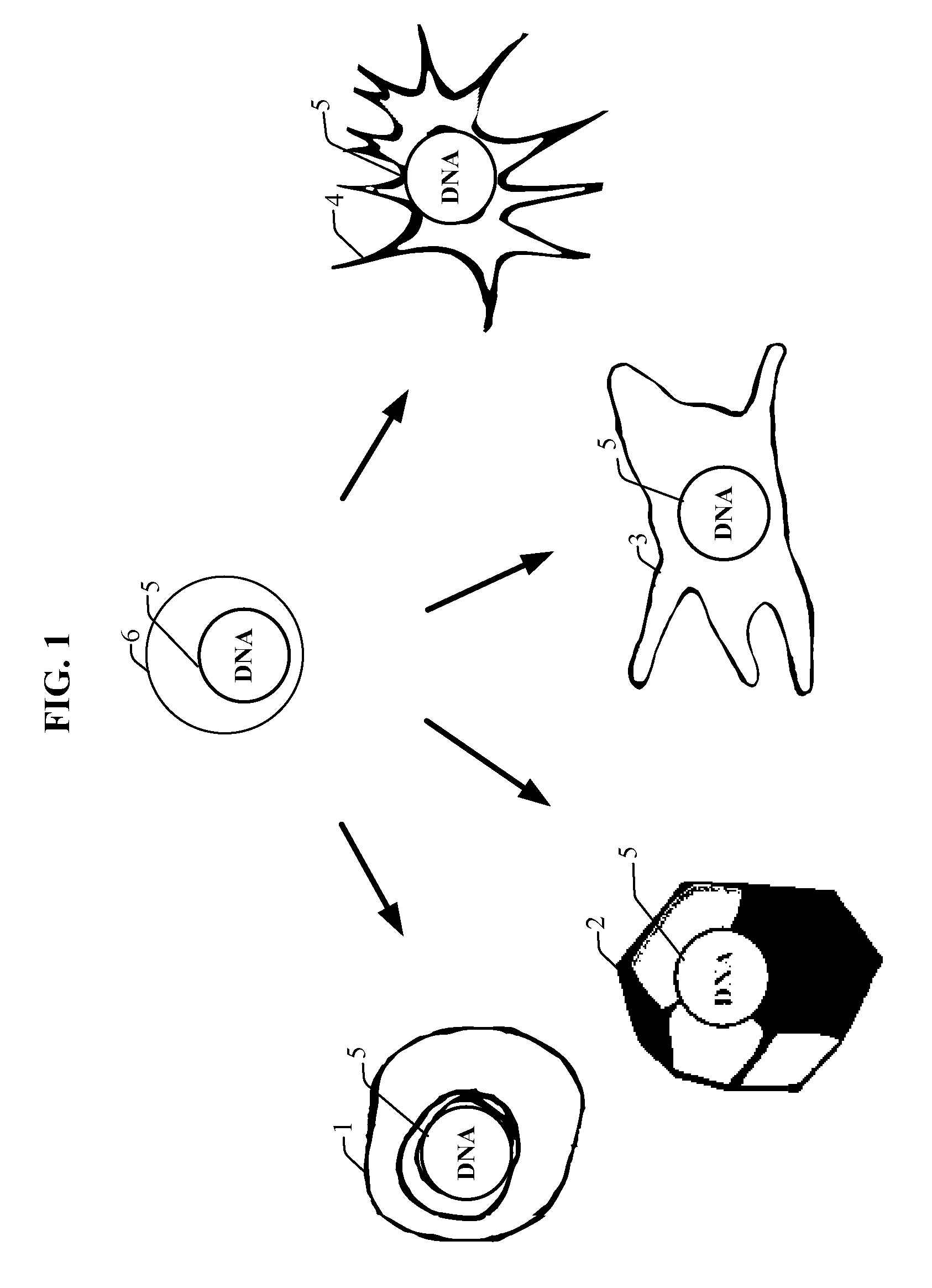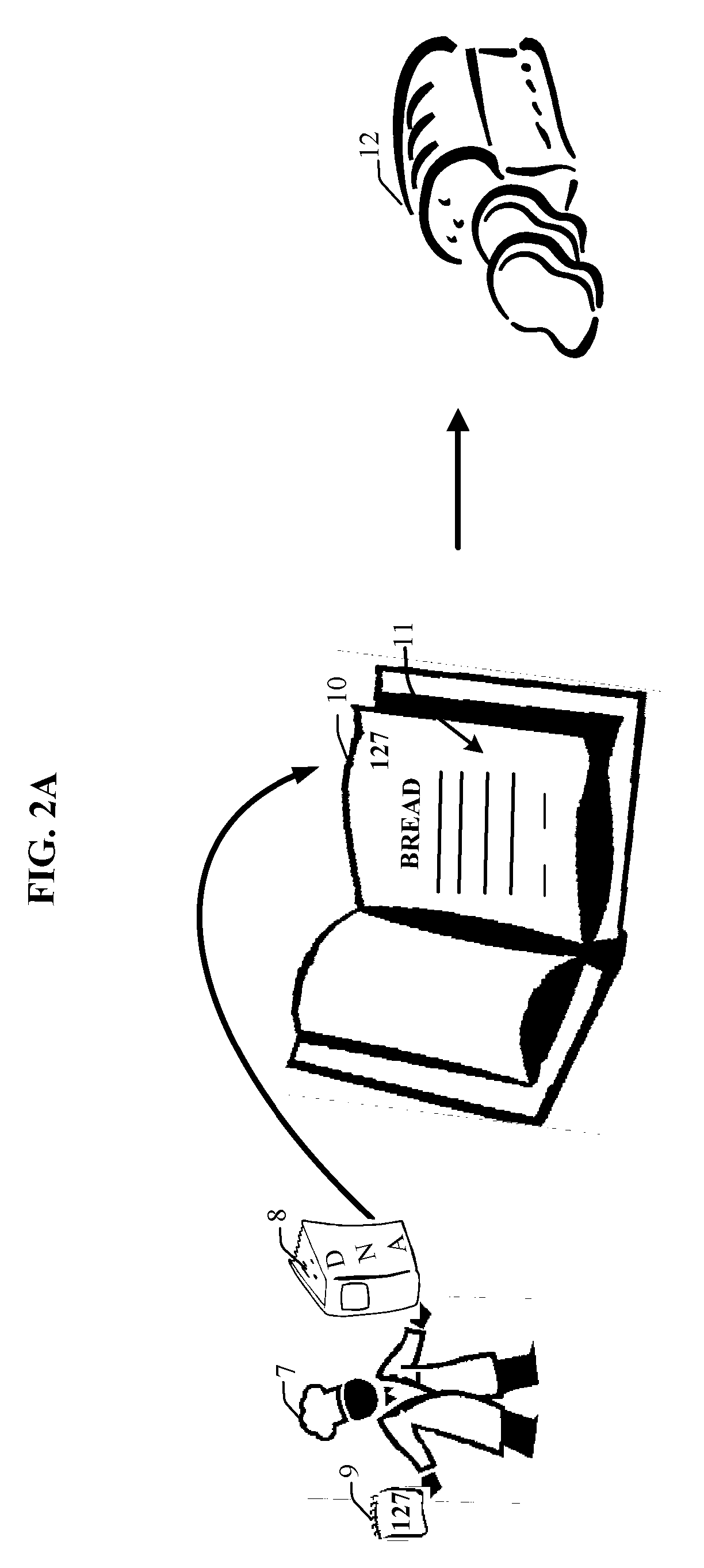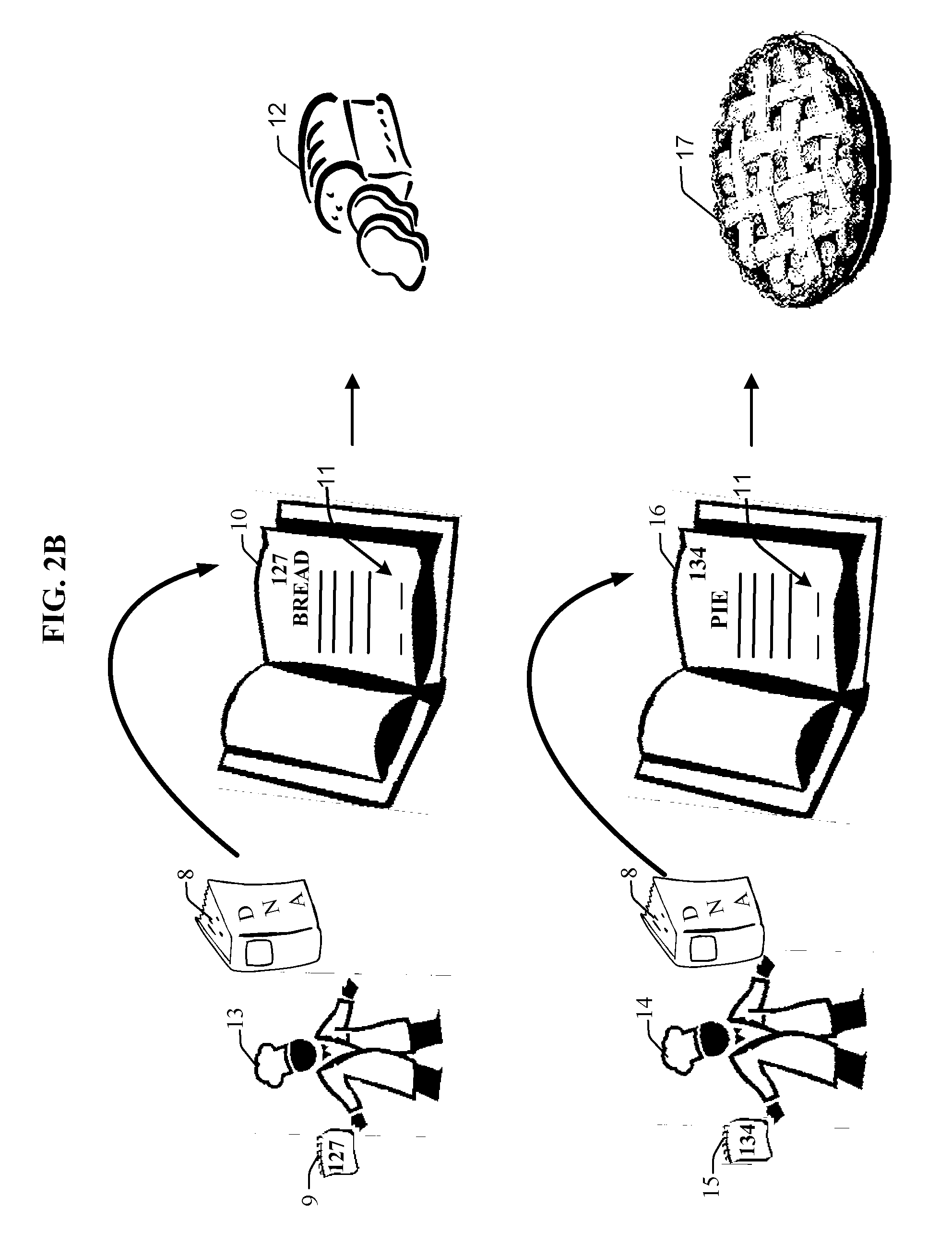Bioinformatically detectable group of novel regulatory oligonucleotides and uses thereof
a technology of bioinformatically detectable and novel regulatory oligonucleotides, which is applied in the field of bioinformatically detectable group of novel regulatory oligonucleotides, can solve the problems that the molecular biology methodologies employed in these studies are limited in their ability to detect rare mrna oligonucleotides
- Summary
- Abstract
- Description
- Claims
- Application Information
AI Technical Summary
Benefits of technology
Problems solved by technology
Method used
Image
Examples
Embodiment Construction
[0278] Reference is now made to FIG. 1, which is a simplified diagram providing a conceptual explanation of a genomic differentiation enigma, which the present invention addresses, inter alia.
[0279]FIG. 1 depicts various types of cells in an organism, such as a cartilage cell designated by reference numeral 1, a liver cell designated by reference numeral 2, a fibroblast cell designated by reference numeral 3, and a bone cell designated by reference numeral 4, all containing identical DNA designated by reference numeral 5. Notwithstanding that the various types of cells are all derived from a common initial fertilized egg cell designated by reference numeral 6, each of these cells expresses different proteins and accordingly acquire a different shape and function.
[0280] The present invention proposes inter alia that the inevitable conclusion from the foregoing is strikingly simple: the genome must contain a modular differentiation coding system. In other words, the genome of each c...
PUM
| Property | Measurement | Unit |
|---|---|---|
| size- | aaaaa | aaaaa |
Abstract
Description
Claims
Application Information
 Login to View More
Login to View More - R&D
- Intellectual Property
- Life Sciences
- Materials
- Tech Scout
- Unparalleled Data Quality
- Higher Quality Content
- 60% Fewer Hallucinations
Browse by: Latest US Patents, China's latest patents, Technical Efficacy Thesaurus, Application Domain, Technology Topic, Popular Technical Reports.
© 2025 PatSnap. All rights reserved.Legal|Privacy policy|Modern Slavery Act Transparency Statement|Sitemap|About US| Contact US: help@patsnap.com



